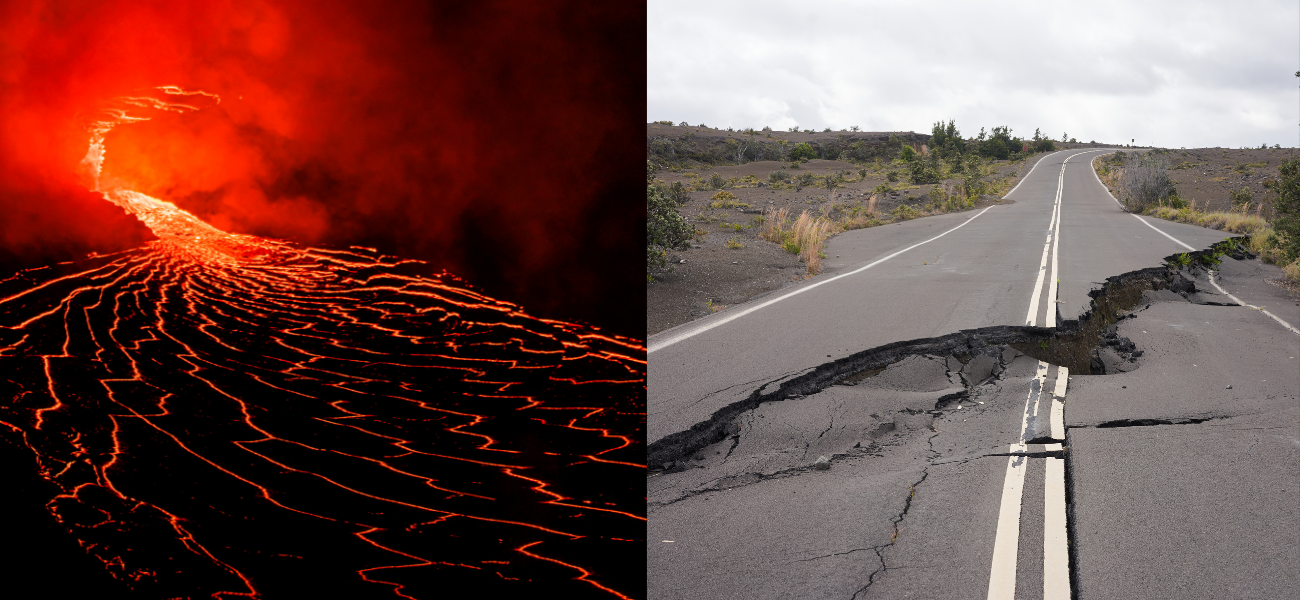Iceland Volcanic Eruption Threat Decreases As '90% Of Magma Dike Solidifies' At Svartsengi
By Favour Adegoke on November 26, 2023 at 8:00 PM EST

A Geophysics professor in Iceland, Magnús Tumi Guðmundsson, shared that the solidification of the magma dike at Svartsengi, a geothermal field near Grindavik, by 90% over two weeks has decreased the likelihood of a volcanic eruption.
Reduced seismic activity and low tectonic plate reflection contribute to the diminished risk. While Guðmundsson emphasizes a potential eruption cannot be entirely ruled out, he deems it less likely.
Concerns of a Grindavík eruption following an earthquake on November 10 have eased, with no signs of magma accumulation.
Likelihood Of Iceland Eruption Is Lower As '90% Of Magma Dike' At Svartsengi Solidifies
🚨Iceland gov shows video of volcano wrecking roads & buildings! Grindavik evacuated as magma shakes the ground with thousands of tremors last week. pic.twitter.com/gn1yGtpbsb
— Sociat USA 🇺🇸 (@SociatUSA) November 19, 2023
According to Guðmundsson, a geophysics professor at the University of Iceland, the solidification of the majority of the dike at Svartsengi, close to the town of Grindavik, has led to a decrease in the likelihood of a volcanic eruption.
Speaking to the Iceland Monitor, Guðmundsson likened the magma's decomposition at the edges of the magma channel to "water that's put inside a fifty-degree frost."
He explained: "This doesn't preclude that there's still something left and that there's still an open way the magma could go upwards, if more magma accumulates. But the likelihood of an eruption has become considerably lower than it was, among other things, because of this."
The reduced likelihood of an eruption is attributed to the dike's 90% solidification over the past two weeks, per the publication.
'A New Process Can Start In The Near Future'
Incredible drone footage flying over a volcano and lava flows at night, captured by Iceland Aerials.
Source: https://t.co/eWLO6xsHuP pic.twitter.com/2KylKwTUTf
— HypnoFlick (@HypnoFlick) November 24, 2023
As stated by the geophysicist, the reduced seismic activity in the area, coupled with the low tectonic plate reflection, has contributed to a decreased likelihood of an eruption.
However, he emphasizes that the possibility of an eruption cannot be entirely ruled out, stating: "There is no way to exclude that there will be an eruption. The most likely area is in the middle of the dike, east of Sýlingarfell mountain."
"This naturally only applies to the current situation. A new process can then start in the near future," Guðmundsson pointedly added, noting that although magma continues to flow into a storage chamber beneath Svartsengi, there is minimal tension and earthquake activity.
Worries Of Iceland Volcanic Eruption Ease, 'No Signs Of Magma Accumulating' In Grindavík
Iceland's seismic activity turned into sound. The country is bracing for a volcano eruption, with thousands of small tremors recorded in the town of Grindavik for the past few days.
The Icelandic Meteorological Office (IMO) says the volcano could erupt with just 30 minutes’… pic.twitter.com/bd2MyIGReo
— Cosmic Curiosities (@TheCosmicCurios) November 22, 2023
Previously, there were concerns about a potential eruption in or near Grindavík following a significant earthquake on November 10 that resulted in the fishing community being evacuated. A fissure was formed following the earthquake, but there is reportedly no sign of magma accumulation.
Geophysicist Guðmundsson clarified that there are no current signs indicating an eruption will commence in the fissure, specifically stating, "There are no signs of any magma accumulating in Grindavík itself."
He shared that although the land rise at Svartsengi has slightly decelerated, it's deemed improbable that it will reach the same level by the end of the month as on November 10.
Guðmundsson highlighted potential scenarios, stating: "There are several scenarios. One is that the land rise will continue under the Svartsengi at a significant rate and in a few weeks there will be a situation similar to that which existed before this event."
Drone footage from CGTN reveals the magnitude of the damage in the nearby town of #Grindavik #Reykjanes #Icelandearthquake #icelandvolcano #earthquake #VOLCANOERUPTION #Iceland pic.twitter.com/fXbKA2TsEz
— Shadab Javed (@JShadab1) November 24, 2023
He continued: "The other thing is quite clear, however, that pressure cannot build up to the same extent as it was before. There is now a weakness where the tunnel is, and although it is largely solidified, there is still, in all likelihood, a connection [where the magma flows upwards]."
He concluded by emphasizing the unlikelihood of heavy pressure rebuilding beneath Svartsengi due to the weakened roof, adding, "The roof has been broken and it takes months or years before it reaches its previous strength. Even though it has been deconstructed, it is weak."
Iceland Defense Walls Can Offer Protection To Homes
Iceland authorities are currently building a "volcano wall" to divert the inevitable eruption https://t.co/Sk8ko5iNkJ
— Mt. St. Helens (@MtStHelensWA) November 20, 2023
According to Guðmundsson, there's no absolute assurance that defense walls being constructed will safeguard everything, but they can offer substantial protection to numerous homes and valuable assets.
He noted the complex nature of dealing with natural forces and acknowledged the inherent risks associated with harnessing geothermal energy in Iceland despite its significant benefits.
Guðmundsson suggested a potential solution, proposing the connection of hot water from Reykjavik to the Suðurnes region. He said: "If the Svartsengi power plant was to be discontinued, then the pipeline from the Reykjavik area could keep Suðurnes, Keflavík Airport, Keflavík and these areas running."
"A town like Reykjanes is based on getting power and heat from a power plant that would be destroyed or damaged by a volcanic eruption. This kind of connection would save everything," he noted, per the Iceland Monitor.
Government Officials say the "likelihood of an imminent volcanic eruption diminishes with time." However, local residents will still remain in temporary homes due to seismic activities, which are decreasing but continue to happen.